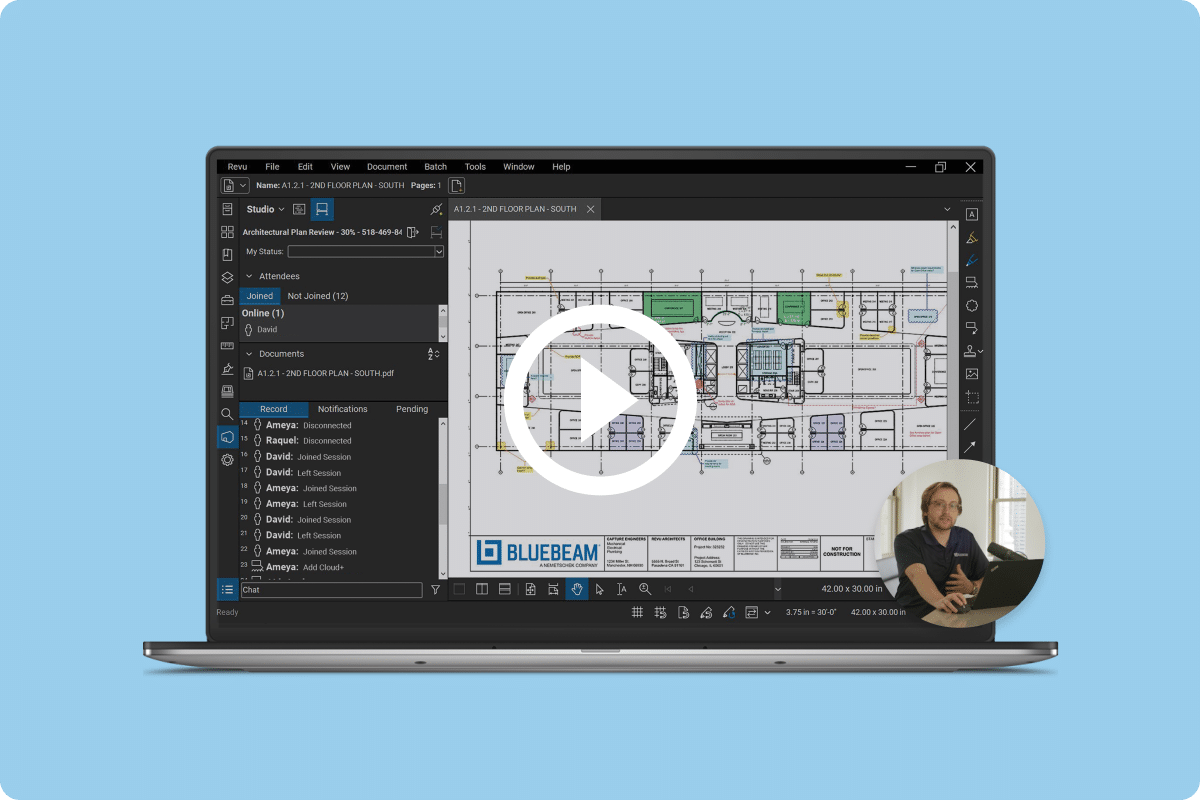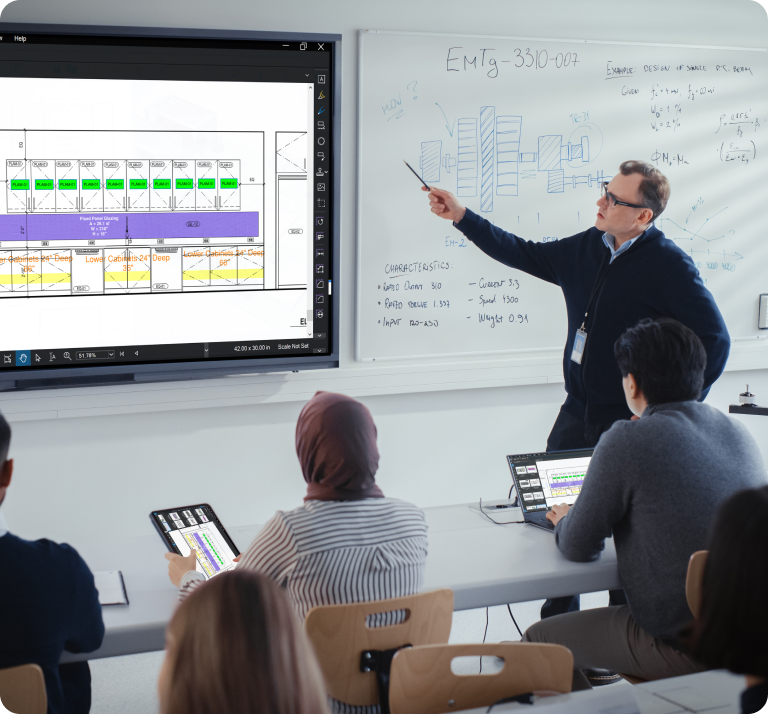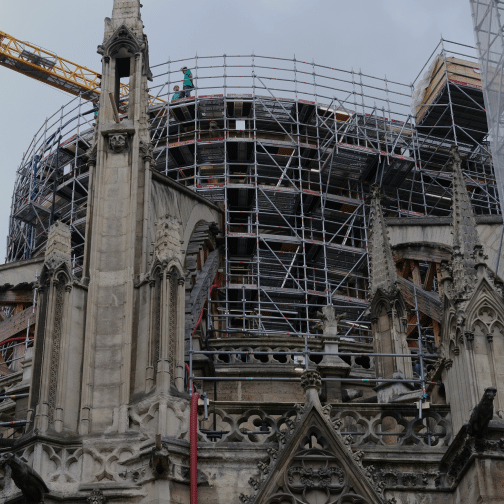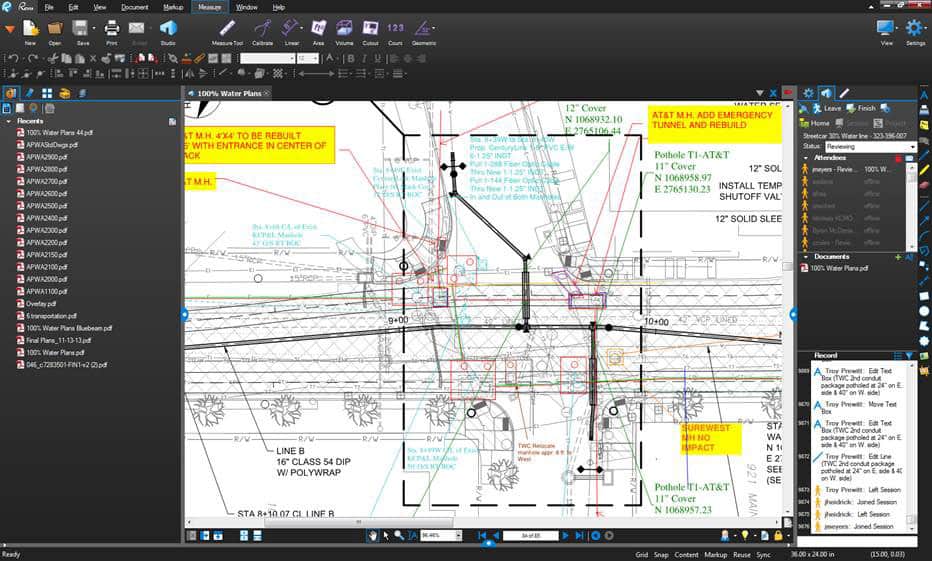Burns & McDonnell Turns to Revu to Plan Utility Work for Kansas City Downtown Streetcar Project
Background
Kansas City, Missouri hasn’t had a downtown streetcar in more than 50 years. With plans for a new rail line underway, the city will soon welcome a streetcar system once again. But before the city streets are transformed by the new system, its project team has several challenges to overcome given the layers of complex utility lines beneath the ground, requiring one of the largest relocations of underground utilities in the history of Kansas City. Burns & McDonnell—a leading engineering, architecture and construction consulting firm listed among ENR’s top 20—is equipped for the task. The first segment of the Kansas City Downtown Streetcar Project is a two-mile, $100-million rail line.
Challenge
During the design process, Burns & McDonnell led the coordination of identifying underground utilities along the planned Kansas City Streetcar corridor. It also designed the new waterline and sanitary sewer systems that will replace underground infrastructure, some of which date back to the 1870s. This work involves collaborating with more than 25 public and private utility companies to address up to 24,400 feet of new water and sewer facilities.
Burns & McDonnell has worked very closely with Kansas City Streetcar Constructors (KCSC) on this project. KCSC was selected by the city as the Construction Manager at-Risk. They are a joint venture of California rail builder Stacy and Witbeck, Inc. and St. Joseph-based Herzog Contracting Corp. Both contractors bring significant experience with constructing streetcar facilities and are leading the effort to coordinate construction activities for the private utilities on the project.
Complex coordination is required, as the area is an extremely congested utility corridor. The water system design consists of relocating and replacing water distribution and transmission mains and providing system improvements for up to 18,000 linear feet of water main and nearly 150 water service connections within the project limits. The sewer system work consists of an initial assessment of the sanitary service, combination and storm sewer mains, development of project plans for approximately 13,400 linear feet of CIPP lining of existing sewers, and rehabilitation/reconstruction of 65 manholes. It’s essential that Burns & McDonnell are in constant communication with the many utility companies to coordinate details and analyze the many risks of construction posed by such outdated utilities.
Considering the scope of work, Burns & McDonnell needed a software solution that would enable it to:
- Quickly and easily communicate with utility companies to mitigate risks as quickly as possible.
- Manage all document files in a central, accessible location.
- Allow individuals from the 25 utility companies to create markups and comments on plan sets.
- Preserve a single source of truth as documents change with the project phases.
Working with a large number of diverse utilities made it especially important to find a software solution that is very intuitive and easily adoptable.
Solution
Burns & McDonnell determined that Bluebeam Revu, a PDF-based editing, markup and collaboration solution for technical professionals, is the ideal solution for collaboration among the utility companies. Specifically, Revu’s integrated cloud-based collaboration technology, Bluebeam Studio, allows the company to reliably create, store and manage PDF project files while monitoring user access.
Burns & McDonnell is deploying Studio Projects—the side of Studio used for document storage and collaboration—to maintain version control over project plans while granting everyone the ability to access and markup the plans. Utility companies and their contractors log in to the project, where they view the plans and add current information about their systems. Burns & McDonnell then uploads new versions of the documents as the phases of the project progress. At the time of this writing, 65 project partners have logged into the project and have made more than 600 markups and comments. In the field, these project plans are accessible for quick access to information during what could be a risky project phase.
Process
At project onset, Burns & McDonnell uploaded all utility sheets as PDFs to the Bluebeam Studio Project. It also created and shared a special tool set, which is a group of customized markups saved in Revu’s Tool Chest, to standardize markups used by everyone on the project team. Old as-builts of utilities were identified and their locations pinpointed by the utility companies who signed into the Studio Project and used the custom tool set to markup the PDFs in assigned color codes. Once the new Kansas City Streetcar track design was 30% complete, the team uploaded an updated set of PDF plans to the Project, and the utility companies and their contractors again signed in and marked up their new waterline, sewer and piping locations. At 60% completion, the utility companies marked up the plans with their specific steps for relocating their systems moving forward. This process continued on to 90% completion plans and the Final Issued for Construction (IFC) plans. As utilities continue to upgrade and relocate their systems, they discover additional information and provide updated data through the Studio Project.
Implementation
Getting all project partners on board with using Bluebeam Revu was initially perceived as a challenge. Burns & McDonnell hosted a Revu training program at the beginning of the project for all utility companies, their contractors and project partners. Nathan Good, applications specialist at Burns & McDonnell, created custom training videos and hosted the training. Despite hesitancy about the software and new tools, Nathan was impressed with Revu’s intuitive interface. “I have never seen a faster adoption. As a technologist, I have to ‘sell hard’ a lot, and this is an easy sell.”
Results
In addition to allowing Burns & McDonnell to coordinate drawing reviews with more than 25 utility companies, Bluebeam Revu is saving the firm countless hours of copying annotations and editing plan sets, not to mention the cost of shipping copies of multiple plan sets to more than 25 project partners. In fact, Jason Meyers, associate civil engineer and project manager at Burns & McDonnell, estimates that Revu has saved the firm more than 320 hours (eight weeks) of work over an eight-month project period.
In a collaborative effort with KCSC, Burns & McDonnell brought all project partners to the table and facilitated design completions while KCSC coordinated construction activities. Because of the training program implemented by Burns & McDonnell, new users have adopted Bluebeam Revu. Rick Merina of KC Streetcar Constructors says, “Using Bluebeam has greatly increased efficiency in the weekly meetings as it provides a real-time visual representation of items being discussed. It allows users to add markups of items being discussed during the meeting in real time, as well as coordinate traffic control, pedestrian control, pothole information and other secondary and tertiary portions of the work to again increase efficiency in the transfer of information.”





